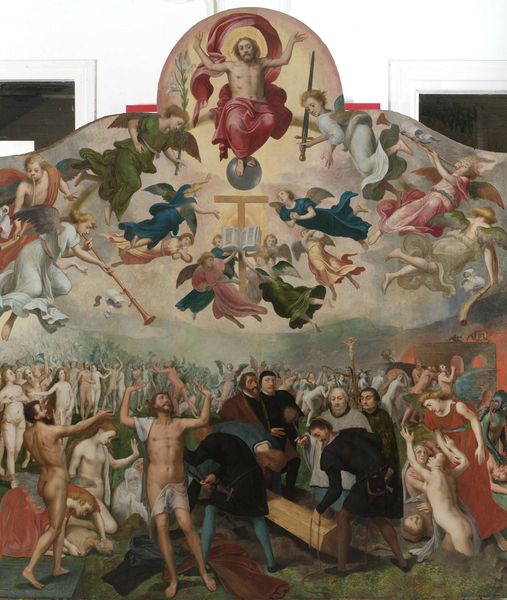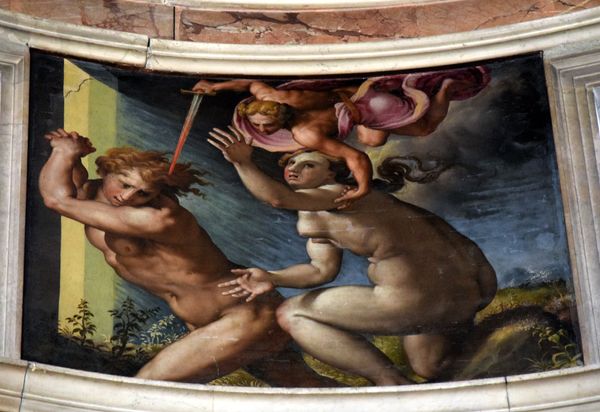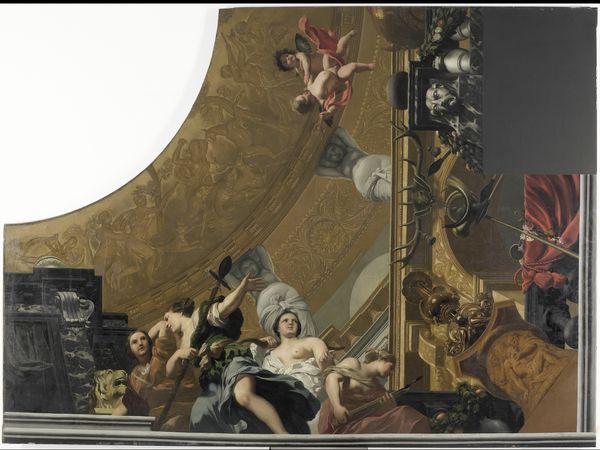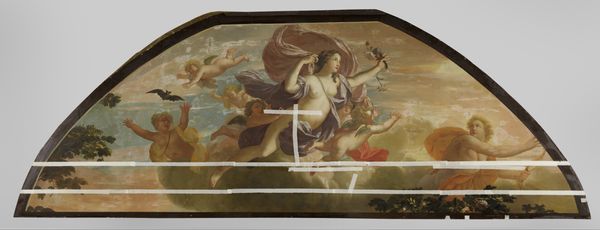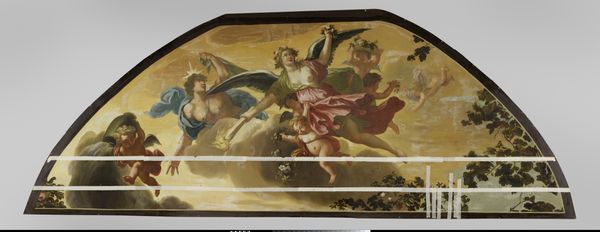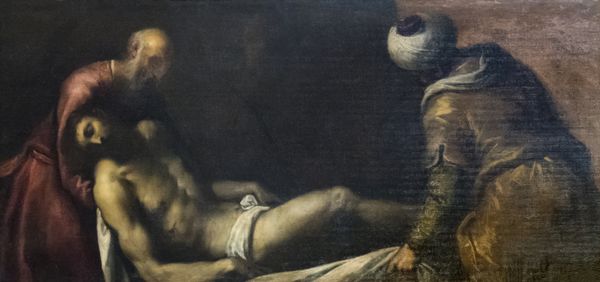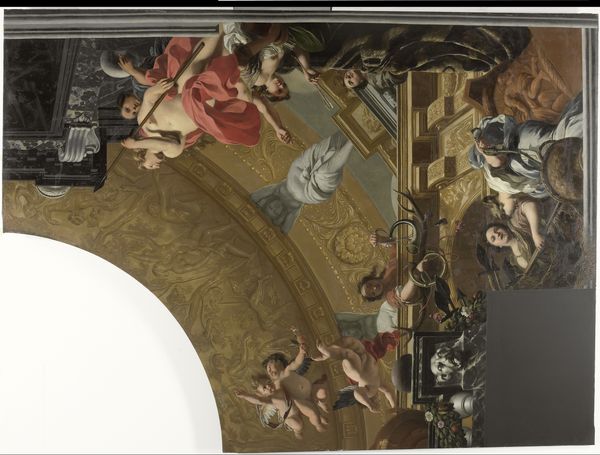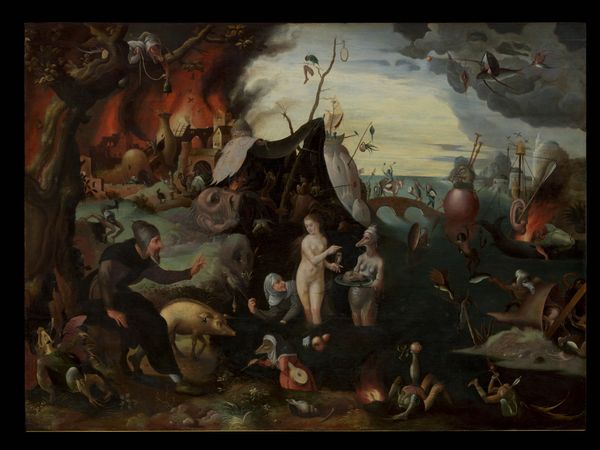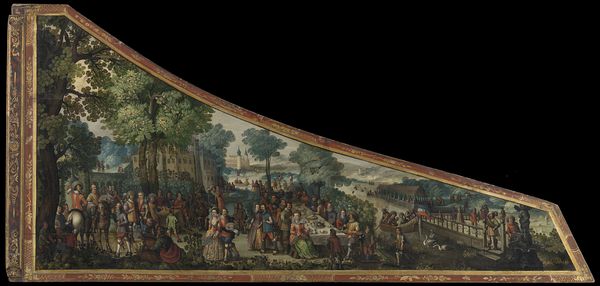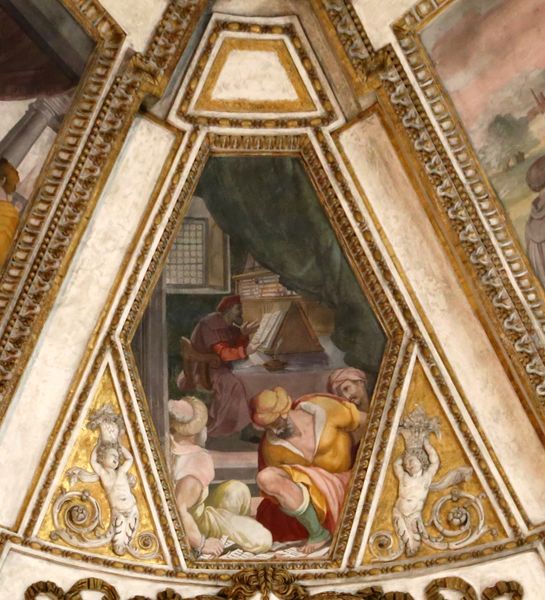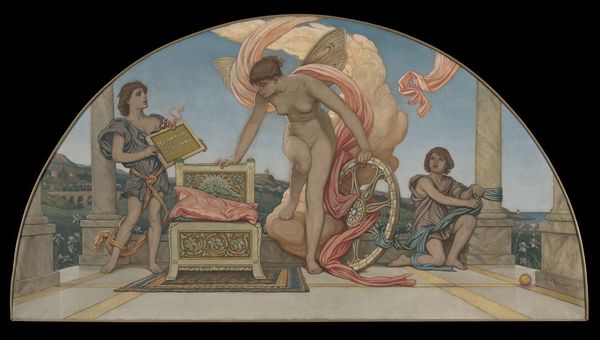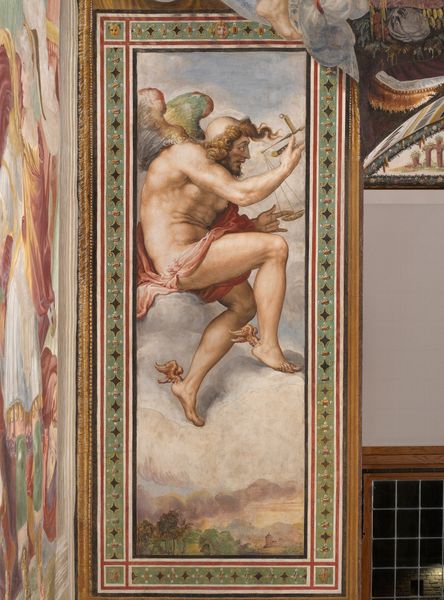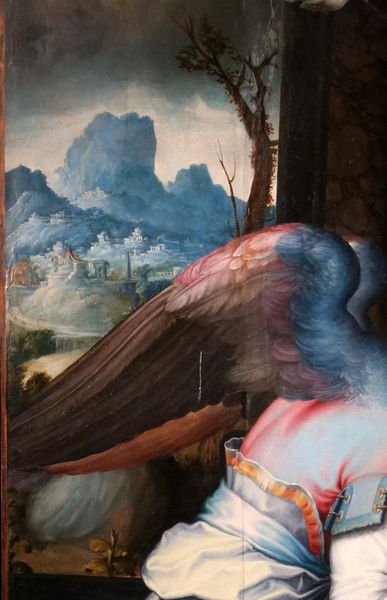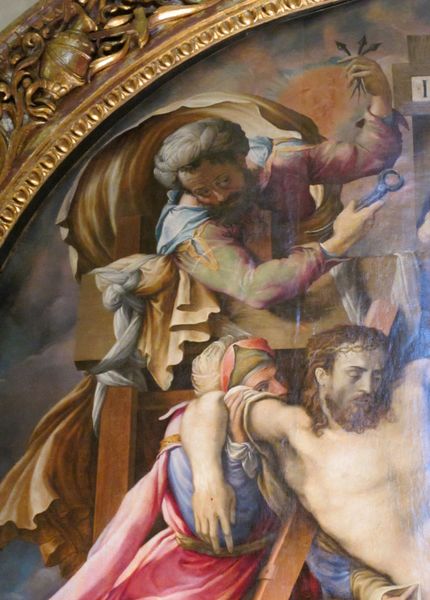
painting, oil-paint
#
allegory
#
baroque
#
painting
#
oil-paint
#
oil painting
#
cityscape
#
genre-painting
#
history-painting
Dimensions: height 79.4 cm, width 165 cm, thickness 3 cm
Copyright: Rijks Museum: Open Domain
Curator: Standing before us is Pieter Isaacsz.'s painting, "Amsterdam as the Centre of World Trade," an oil on panel, created circa 1604 to 1607. Editor: It strikes me immediately as both grandiose and… unsettled. The hazy background lends an almost dreamlike quality to the intense symbolism up front. There's a lot going on here, a powerful and complicated message being conveyed. Curator: Indeed. This allegorical scene attempts to capture Amsterdam’s prominent role in the burgeoning global trade of the early 17th century. Consider how Isaacsz. is actively constructing a narrative about the city's identity and its relationship to the world. Editor: Precisely! It's important to dissect that narrative. Look at the central figure, the personification of Amsterdam. She sits enthroned, hand resting on a globe. What does that positioning truly signify in relation to the figures reclining at her feet? Or the ships sailing off in the distance? Curator: Context is key here. The Dutch Republic was undergoing a period of immense economic growth, propelled by overseas trade via the Dutch East India Company. Paintings like these served as visual propaganda, reinforcing a sense of national pride and legitimizing Dutch commercial power. Editor: Propaganda indeed, and painted over the blood and labor of colonized peoples. The serene landscape, the bountiful figures—it all works to obscure the violence inherent in that trade. Those ships represent voyages built on exploitation. Curator: But don't you think it’s fascinating how Isaacsz. combines mythological and contemporary elements? The presence of Neptune and other deities suggests the Dutch saw their prosperity as divinely ordained. It mirrors earlier artistic traditions used to assert power. Editor: And therein lies the rub, doesn't it? These classical references served to elevate the status of Amsterdam, but also served as a constant reminder of the social and cultural stratification upon which it was built. How do we reckon with that legacy when engaging with this painting today? Curator: I think by acknowledging those complex layers we avoid perpetuating the myths these paintings promoted. By understanding the forces shaping its creation, we equip ourselves to view its imagery more critically. Editor: Ultimately, "Amsterdam as the Centre of World Trade" isn't just a depiction of a thriving city; it’s a mirror reflecting a society grappling with its own power and privilege—a reflection that remains unsettlingly relevant.
Comments
rijksmuseum about 2 years ago
⋮
This painted harpsichord lid is literally bursting with ambition. Depicted at the left is Amsterdam, personified by the City Maid. The world lies at her feet: in the distance is the African Cape of Good Hope, at the left Asia with the Indonesian archipelago, and at the right America. In the meantime, the Dutch sail en masse to these regions, conquer them, and conduct trade there. In this way the Spanish foe is thwarted, as is inscribed in Latin on the stone at the right.
Join the conversation
Join millions of artists and users on Artera today and experience the ultimate creative platform.
